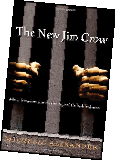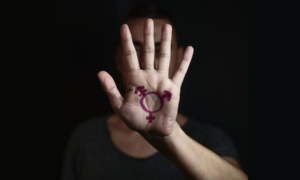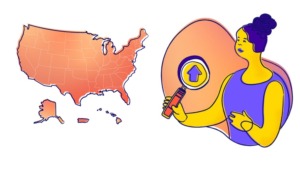It has taken many years for people to start asking why the majority of inmates in United States prisons are African-American. Perhaps that is because the obvious answer contradicts our widely held belief that the days of overt racism are past.
After studying the data, a number of experts have concluded that the high incarceration rate of blacks is due to a disproportionate effort by police to enforce the nation’s stringent anti-drug laws in urban neighborhoods where African-Americans live. While authors Michelle Alexander and Paul Butler, both African-Americans, have both recently written books about the problem, they make the case using entirely different approaches.
 |
 |
Alexander, an Ohio State University professor, blames the disparity on “a stunningly comprehensive and well-disguised system of racialized social control that functions in a manner strikingly similar to Jim Crow.” In her book, aptly titled The New Jim Crow, Mass Incarceration in the Age of Colorblindness, Alexander traces the cause to a political decision in the 1980s during the Reagan administration to step up the war on drugs in response to the popularity among poor blacks of a cheap derivative of cocaine known as crack.
“The fact that more than half of the young black men in any large American city are currently under the control of the criminal justice system (or saddled with criminal records) is not – as many argue – just a symptom of poverty or poor choices, but rather evidence of a new racial caste system,” she writes.
Butler, a law professor at George Washington University, begins his book Let’s Get Free, A Hip-Hop Theory of Justice by recounting how, while working as a prosecutor in Washington, D.C., he was arrested on a false charge of assaulting a neighbor. It caused him to reconsider the legal latitude given to prosecutors, whom he accuses of being overzealous in bringing charges against young black men found with small amounts of marijuana.
“The biggest threat to freedom in the United States comes not from some foreign or terrorist threat, but rather from our dysfunctional criminal justice system,” Butler writes. “It is out of control. We define too many acts as crimes, punish too many people far longer than their crimes warrant, and therefore have too much incarceration. Some people deserve to be in jail, but not 2 million. … We could reduce that number by at least 25 percent and actually be safer.”
Even though several nonprofits, such as the Sentencing Project, have taken up this cause in the past decade, the racial breakdown of the prison population is not well known. With 2.3 million people behind bars in 2008, the United States has the highest incarceration rate in the world. Studies from the last decade show that more than 10 percent of all black males between ages 25 and 29 were in prison, compared with only 1.3 percent of white males in the same age group.
Among juveniles, the disparity is even more extreme. While black youth make up 17 percent of the juveniles in the United States, they account for 46 percent of those arrested, 31 percent of those referred to juvenile courts and 41 percent of juveniles waived into adult courts. Alexander says this is the natural result of biased law-enforcement efforts. While government statistics show the majority of illegal drug users are white, three-fourths of all those imprisoned for drug offenses are black or Latino.
“What is most concerning about the new racial caste system … is that it may prove to be more durable than its predecessors (slavery and Jim Crow laws),” she writes. “Because this new system is not explicitly based on race, it is easier to defend on seemingly neutral grounds. And while all previous methods of control have blamed the victim in one way or another, the current system invites observers to imagine that those who are trapped in the system were free to avoid second-class status or permanent banishment from society simply by choosing not to commit crimes. It is far more convenient to imagine that a majority of young African-American men in urban areas freely chose a life of crime than to accept the possibility that their lives were structured in a way that virtually guaranteed their early admission to a system from which they can never escape.’’
It is not difficult to connect these disparate incarceration rates to the persistently low employment rate for African-American males. Not only is it hard for a young man with a criminal record to get a job, but his incarceration tends to undermine the economic and emotional well-being of his entire family. By comparison, African-Americans played a much more important role during slavery and the Jim Crow era, because the economy depended upon them.
Although black men have been imprisoned at much higher rates than white men for more than 20 years, Alexander observes that political leaders in the African-American community have not made an issue of it. In January 2009, she notes, the sentencing disparity was not even mentioned on a list of 35 important topics prepared by the Congressional Black Caucus. While some states are reconsidering their high incarceration rates, she points out that the reasons for doing so are primarily to trim spending – not to make the situation less unfair.
Alexander asserts that the so-called “crack epidemic,” which Congress used to explain tougher sentencing laws, was exaggerated. Between October 1988 and October 1989, The Washington Post ran 1,565 stories about it, causing the newspaper’s ombudsman to conclude that the Post was in the throes of a “hyperbole epidemic.” The author alleges that the subsequent legal crackdown on drugs was motivated by racial attitudes more than fear of crime.
The media hype had a big impact. Not only were the drug laws tightened by Congress during that period, but also the U.S. Supreme Court issued rulings that weakened Fourth Amendment safeguards against illegal searches and imposed an impossible burden on defense lawyers who might try to prove the laws were being enforced in a discriminatory way.
Butler notes that while the vast majority of people locked up today committed nonviolent crimes, these same people are more likely to commit violent crimes after their first prison sentences. “The odds are stacked against inmates leaving prison as better people,” he writes. “Most don’t get reformed. It’s not because they can’t be rehabilitated, but rather because it is a correctional facility in name only; ‘long term storage locker’ would be a more accurate description. … Prison becomes a finishing school in criminal activity for nonviolent offenders.” He sees that as a good reason to keep as many nonviolent offenders as possible out of prison.
The money that states spend on prisons is being subtracted directly from the money available for education, according to Butler. “California,” he notes, “has some of the best universities in the nation. Now, however, you can directly chart the money leaving the education system and going toward prison expenditures.” This year, many states have made significant cuts in education funding.
Alexander says it will take nothing less than a social revolution to persuade U.S. politicians to loosen the sentencing guidelines for such nonviolent crimes as drug possession. As an alternative, Butler urges Americans to consider jury nullification when they are asked to sit in judgment of a drug offender. Jury nullification occurs when jurors decide that despite evidence showing the defendant may have committed the crime, they will vote for acquittal because they believe the law or the prosecutor’s conduct is unfair. Butler argues that jury nullification is justified when the consequences of sentencing affect more people than the criminal alone. To demonstrate the suffering caused in the black community by the racial disparity in prosecution, he quotes the words of rapper Makaveli:
“My homeboy’s doin’ life, his baby mamma be stressin’/ Sheddin’ tears when her son finally ask that question/ Where my daddy at? Mama, why we live so poor?”





























